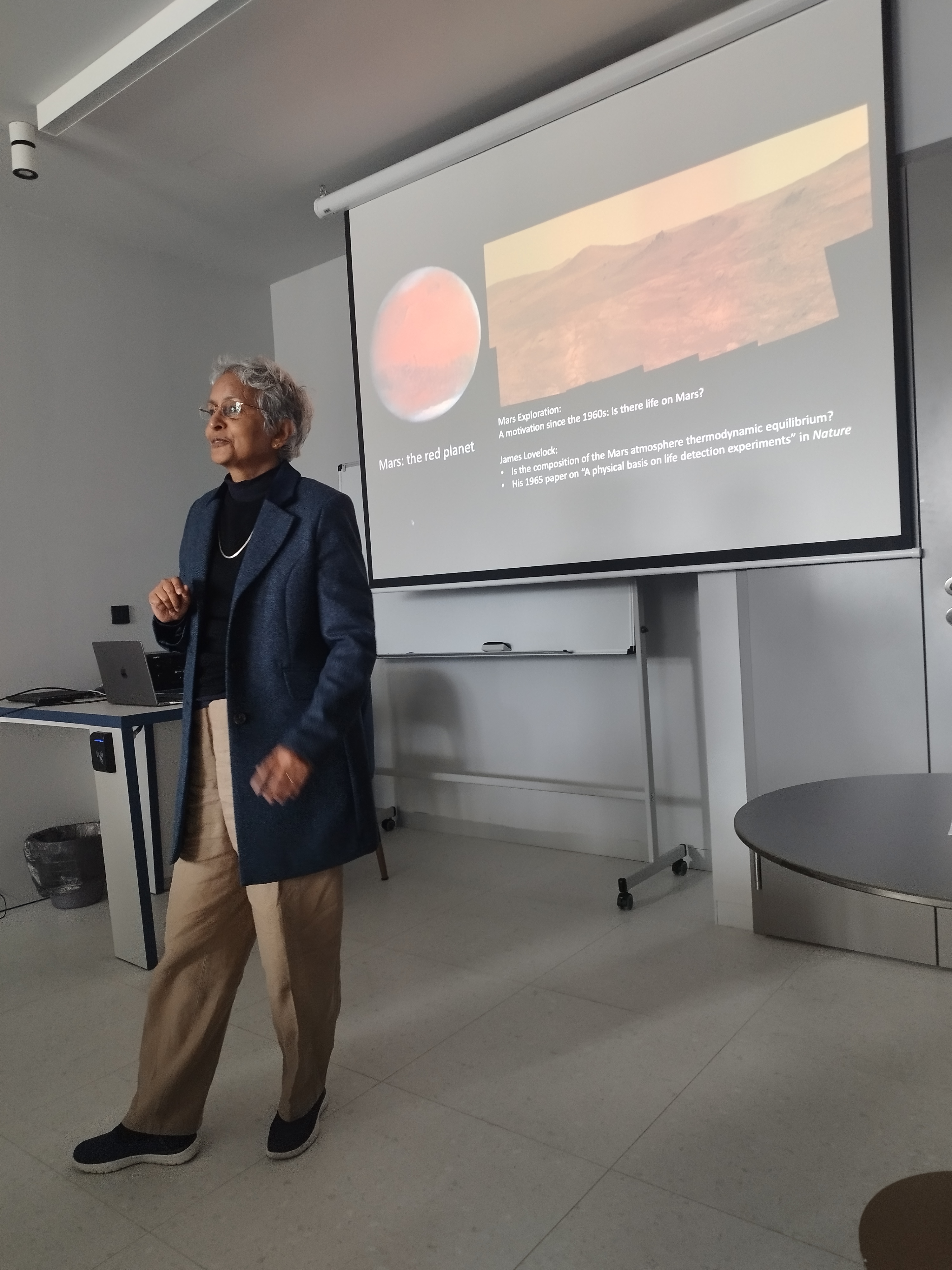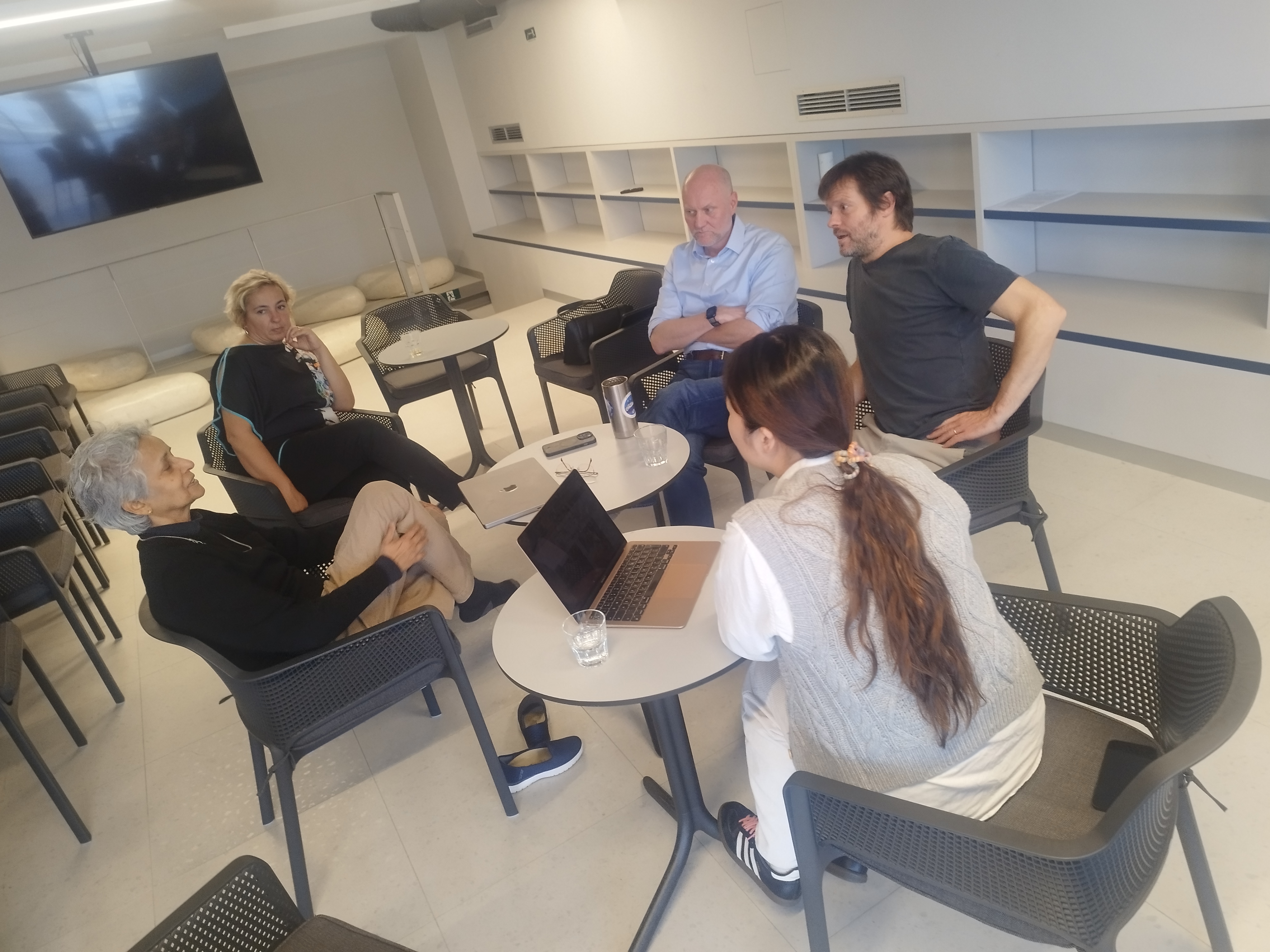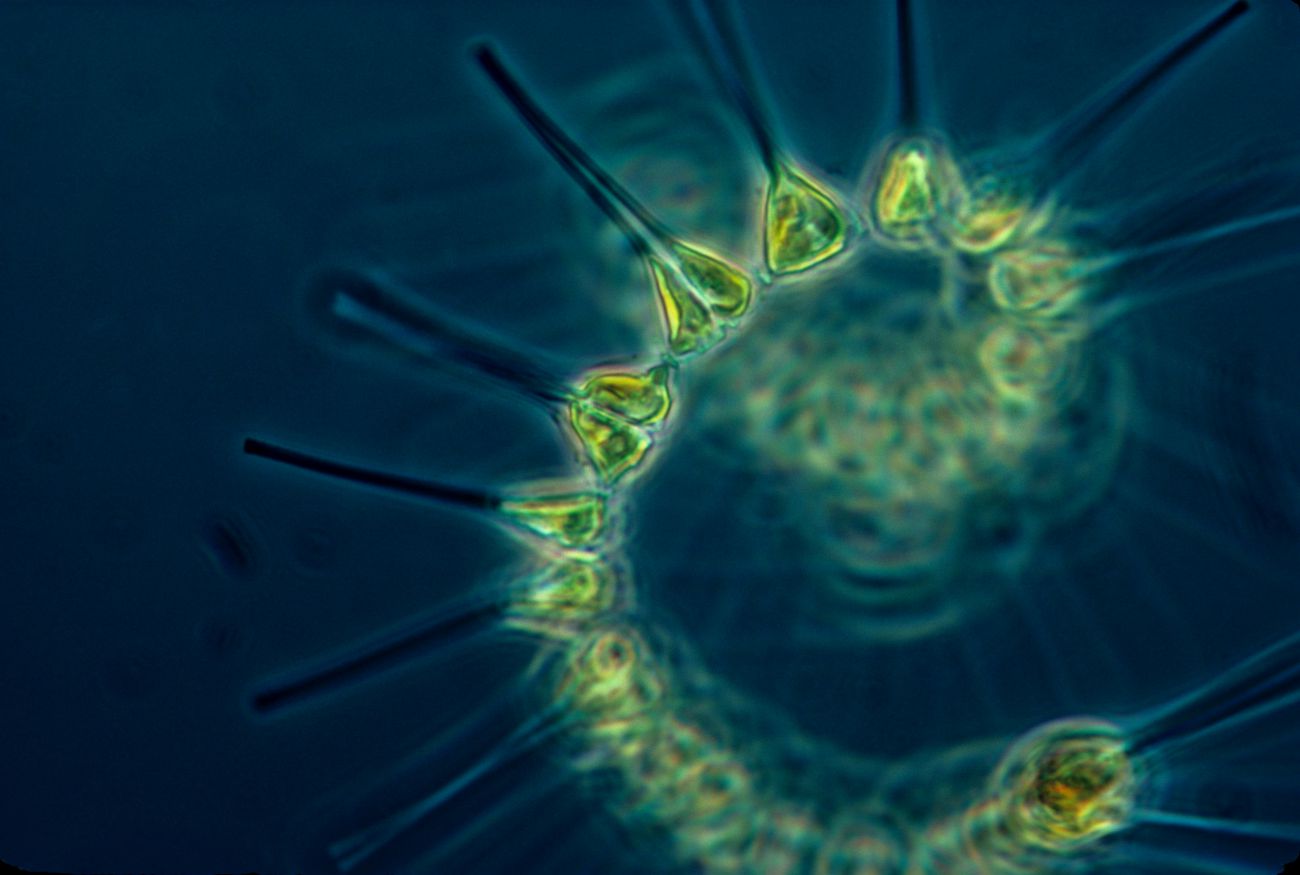Modelling primary production
The second project workshop took place at the Faculty of Science in Split from 27 till 31 October. The theme of the workshop was modelling primary production.

The first day of the workshop conisisted of hands on activities in which the students from the Faculty of Science participated in. There were four data analysis and modelling exercises, which were given by Marin Vojković from Split, Mohammad Amirian from Canada, Antonija Matek from Zagreb and Marija Bačeković Koloper from Split. In the first excersise the students were aquinted with the Keeling curve: the now famous time series of carbon dioxide concentration in the atmosphere. The second was given by Antonija Matek in which she gave an introduction to R with examples of how to analyse solar irradiance data. Following Antonija, Mohammad gave a talk where he presented an R package developed by him and collabroatores used to analyse photosyntehsis irradiance measurements. The final excersise was presented by Marija Bačeković Koloper. She presented how to imlement a primary production model, building on the prior presentations. The codes for data access and analysis were given to the students in all excersises.

The second day opened with a grounding session led by Žarko Kovač, who traced the development of primary-production models from early empirical formulations to more mechanistic, dynamical systems frameworks. His overview established the conceptual lineage that still shapes current modelling approaches. This was followed by Mohammad Amirian, who discussed the role of photoinhibition under high irradiance and presented ways to represent photoinhibition more realistically in models. His contribution highlighted how physiological nuance can substantially affect primary production estimates. The day concluded with a talk given by Robert Brewin, who examined differences between surface and subsurface phytoplankton communities across the Atlantic Ocean. By showing how vertical structure and community composition influence production patterns, he underscored the complexity of modelling efforts. The afternoon session was split into two groups. The first group worked on gap filling time series of primary production, whereas the second group worked on a joint scientific manuscript.

The thirt day shifted toward the data foundations and statistical methods essential for handiling primary production data. Heather Bouman opened with an overview of existing global datasets describing key photosynthesis parameters, highlighting their coverage, limitations, and relevance for large-scale applications. Building on this, Marija Bačeković Koloper introduced a newly assembled global dataset, explaining its improved consistency and potential to support next-generation model development. Her presentation emphasized the need for transparent, high-quality parameter resources. In late morning and early afternoon, the gap filling session continued in parallel with a photosynthesis parameters discussion and working group. In the afternoon, Bror Jonsson addressed how models can perform under atypical or rapidly changing environmental conditions, exploring the challenges of prediction outside standard regimes. This was followed by Jean Paul Mattern, who presented Bayesian approaches for estimating photosynthetic parameters directly from data. By emphasizing formal uncertainty quantification and propagation, he provided a statistical framework that complements the morning’s discussion on data availability and quality. The day collectively highlighted the interplay between datasets, parameter estimation, and uncertainty management.
The fourth day turned toward the physical and climate controls on marine primary production. Shubha Sathyendranath opened with a talk on the role of primary production and photosynthesis in general as a part of the carbon cycle of our planet. She also talked of rapid ecosystem shifts and potential tipping behaviour in the ocean, stressing the need for models that can capture nonlinear responses to climate-driven change. Next, Qi Zheng explored how stratification governs vertical phytoplankton dynamics, illustrating the effects of light availability, nutrient structure, and mixing on depth-resolved productivity on decadal time scales. This was complemented by Zrinka Ljubešić, who examined the influence of small-scale physical processes, such as turbulence and fine-scale mixing, on phytoplankton communities, highlighting complexities that challenge traditional modelling approaches. The lecture series concluded with Antonija Matek, who presented insights from a highly resolved coastal study near Lastovo Island, demonstrating how local environmental variability gives rise to dynamic production patterns that are difficult to generalize without careful observation. In the final sessions the gap filling results were presented and discussion was held on the potential for increasing data sharing. Collectively, the day brought together climate processes, vertical structure, and small-scale physical variability, reinforcing the importance of multi-scale thinking in primary-production modelling.

Across the week, the lecture series moved from foundational perspectives (history, datasets, parameters) through methodological advances (statistical inference, atypical situations) to complex system behaviour (tipping points, small-scale processes). Together they provided a coherent narrative: to model marine primary production not only at global scales, but with an eye to how local, physical, biological and climatic processes interlink and how uncertainty propagates through this chain. The scope of the talks also emphasised the interdisciplinary nature of the challenge: ocean physics, biology, statistical modelling, and high quality climate data must be brought together. The selection of lectures, from global-scale datasets to fine-scale case studies, enabled participants to appreciate both the broad canvas and the detailed brush-strokes of marine primary production modelling.
In the context of the PHOTOCLIM project’s mission: to quantify marine primary production in a changing climate, fill data gaps and develop bio-economic indicators of the ocean ecosystem, the lecture series clearly aligned with key objectives: refining model parameterisation, confronting data gaps, and emphasising system fragility under climate change. One clear takeaway is that modelling primary production cannot rest on average conditions alone. As several talks emphasised, atypical or extreme conditions, may affect primary production disproportionately and need to be included in next-generation models. Similarly, parameter uncertainty must be front and centre if model outputs are to support management and policy.
We have uploaded some results from our workshop and on the links below you can find the following:
1. Detailed list of the participants
2. Detailed schedule of the workshop
3. Photos of workshop participants
4. Codes from Antonija Matek are available on GitHub here.
At present we are collecting codes that were used and generated at the workshop. All these codes are a work in progress and will be updated frequently. Once finished they will be uploaded online via GitHub to be freely available to the oceanographic community.





